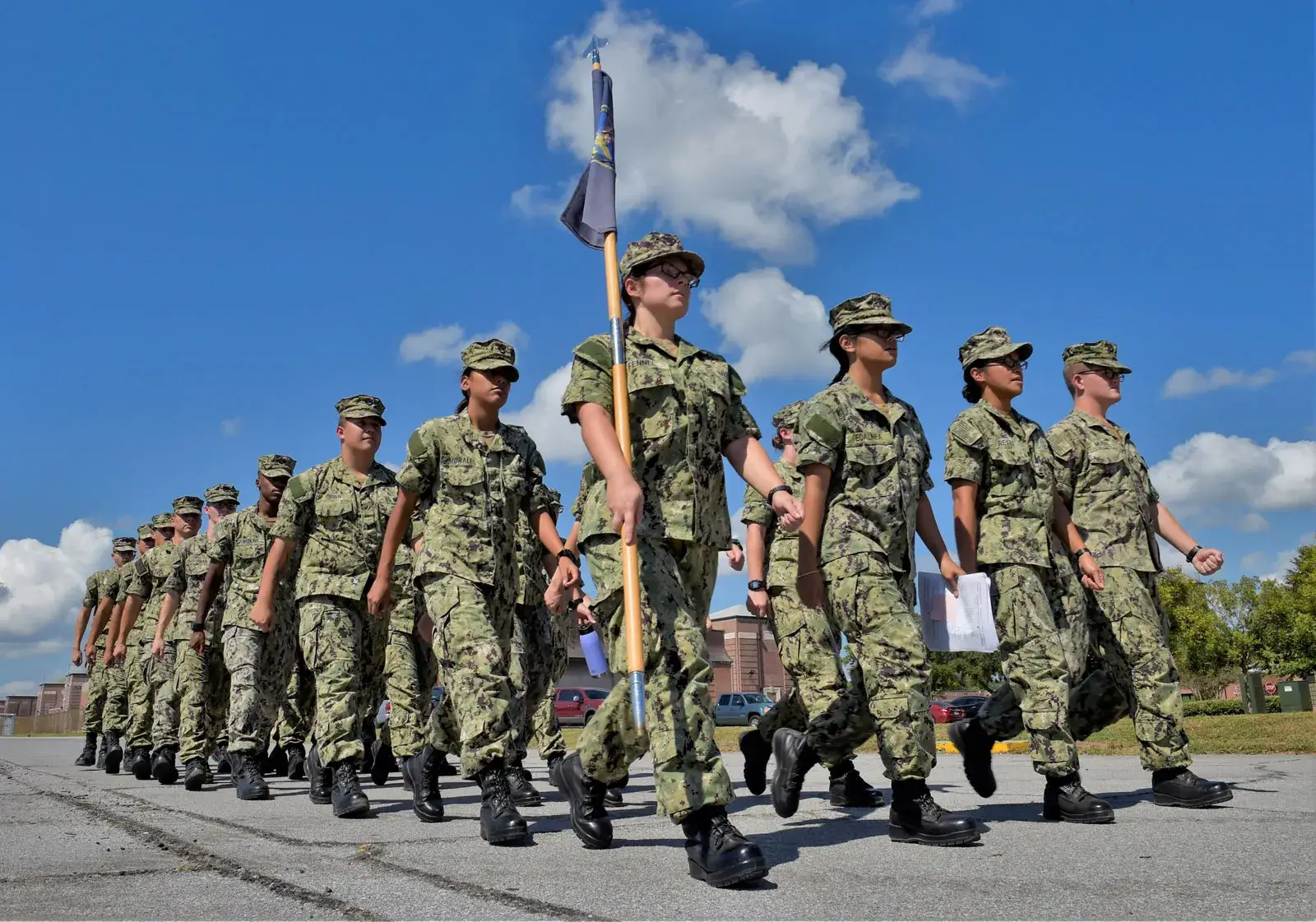Currently, military service is not mandatory for all citizens in the United States. The Selective Service System requires that all male U.S. citizens and male immigrants residing in the country between the ages of 18 and 25 register for potential military conscription in the event of a national emergency. However, the U.S. operates on a voluntary military system, and individuals are not automatically enlisted solely based on registration. Military service is a personal choice, and individuals can choose to enlist in the Armed Forces or pursue alternative career paths.
Brief Overview of military service in the USA
Military service in the USA, commonly referred to as the “draft” or “selective service,” requires almost all male citizens and immigrants between the ages of 18 and 25 to register with the government. Although registration is mandatory, the United States has maintained an all-volunteer military force since 1973, meaning no one has been forcibly drafted into service since then. The possibility of a draft being reinstated remains, however, should a national emergency occur that the existing military forces cannot support.
The draft registration process is relatively simple and can be completed online, in person at post offices, or through high schools and driver’s license applications. While women currently serve in combat roles, they are not required to register for the draft. This would require a change in legislation by Congress.
Comparison of conscription and volunteer-based military service

Since its inception, the United States has gone through various phases of military conscription and volunteer-based service. Here’s a comparison of these two models:
- Conscription, also known as the draft, was the mainstay of the US military during times of war, like in World War I and II. It ensured the timely availability of adequate manpower for the country’s defense needs. However, the Vietnam War and the protests against it led to a reconsideration of this approach.
- The all-volunteer force (AVF) came into existence in 1973, ending the draft. This shift created a professional, sustained, and highly skilled military mainly supported by volunteers. Over the past 50 years, the AVF has proven successful, with more than 11 million people joining active duty service and maintaining strong retention rates.
- While conscription was essential during certain periods, the AVF has allowed the military to be highly efficient and robust. Factors like low unemployment, reduced veteran population, and challenges like the COVID-19 pandemic have made recruiting more difficult in recent years. Yet, the AVF continues to attract dedicated and talented individuals committed to serving their country.
Historical background of military conscription in the USA
The United States has a long history of using conscription, or mandatory military service, dating back to the Revolutionary War era. However, the Selective Service System as it is known today was not used until World War I. Since then, conscription has been utilized during various conflicts, such as World War II and the Vietnam War.
- In 1940, prior to the U.S. entering World War II, the first peacetime draft in the nation’s history was enacted due to increased global tensions. After the attack on Pearl Harbor, the system rapidly and smoothly filled wartime manpower needs. The draft law expired at the end of the war but was reenacted in 1948 to maintain necessary military manpower levels during the Cold War.
- The Selective Service System remained in standby from 1973 to support the all-volunteer force in case of an emergency. Registration was suspended until 1975, and the system entered deep standby. However, in late 1979, revitalization efforts began, and registration resumed in 1980.
Today, young men in the United States must register with the Selective Service System within 30 days of their 18th birthday, but mandatory military service is not currently enforced.
The Selective Service System in the USA
The Selective Service System is an independent agency within the Executive Branch of the U.S. Federal Government, responsible for registering males aged 18 through 25. Although registration is mandatory for most men, it does not automatically mean induction into the military.
- In a crisis that requires a draft, men would be called upon in a sequence determined by a random lottery, considering their birth year. Before being inducted into the Armed Forces, they would undergo examination for their mental, physical, and moral fitness. Only then would they be deferred, exempted, or enlisted for military service.
- Immigrants, including undocumented immigrants and those with expired visas, are also required by law to register within 30 days of their 18th birthday or 30 days after entering the U.S. However, non-immigrant visa holders are exempt as long as their visa remains valid until age 26.
- Dual nationals must also register regardless of their location, whereas citizens of U.S. territories like Puerto Rico, Guam, and the Virgin Islands are automatically considered U.S. citizens and are required to register as well.
- Lastly, men who were hospitalized, incarcerated, or confined in an institution from the age of 18 to 25 may be exempt from registration if proven that they were continuously institutionalized or confined without any break longer than 30 days.
Historical Examples of Military Drafts in the USA
The United States has a long history of military drafts, with conscription being implemented during critical periods of conflict.
- One of the earliest instances of conscription in the US was during the Civil War in the 1860s. The Civil War Military Draft Act of 1863 called for registration of all males aged 20 to 45. Unfortunately, the act placed a heavy burden on the poor, as wealthier citizens could avoid the draft by paying a considerable sum of money or hiring substitutes.
- In response to World War I, President Woodrow Wilson signed the Selective Services Act in 1917. This act required men between the ages of 21 and 30 to register with the newly created Selective Service System. Approximately 24 million men registered, and 2.8 million were drafted into the armed forces.
- The Burke-Wadsworth Act in September 1940 established the first peacetime draft in US history. This act initially mandated men aged 21 to 36 to register, and this range was later expanded to 18 to 37 after the Pearl Harbor attack in 1941. It also marked the inclusion of African Americans in the draft beginning in 1943.
Conclusion
In conclusion, while compulsory military service is not currently in effect in the United States, the topic remains a controversial issue. As mentioned earlier, the main points of debate revolve around its constitutionality and the potential benefits or drawbacks of implementing such a policy.
Those in favor of mandatory military service claim that it is not only constitutional but that it would also benefit the nation as a whole. They argue that compulsory service would ensure the nation’s security, provide benefits such as increased fitness and discipline for individuals, and potentially promote national unity.
Reference:
https://en.wikipedia.org/wiki/Conscription_in_the_United_States

